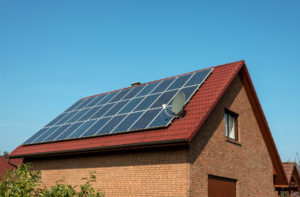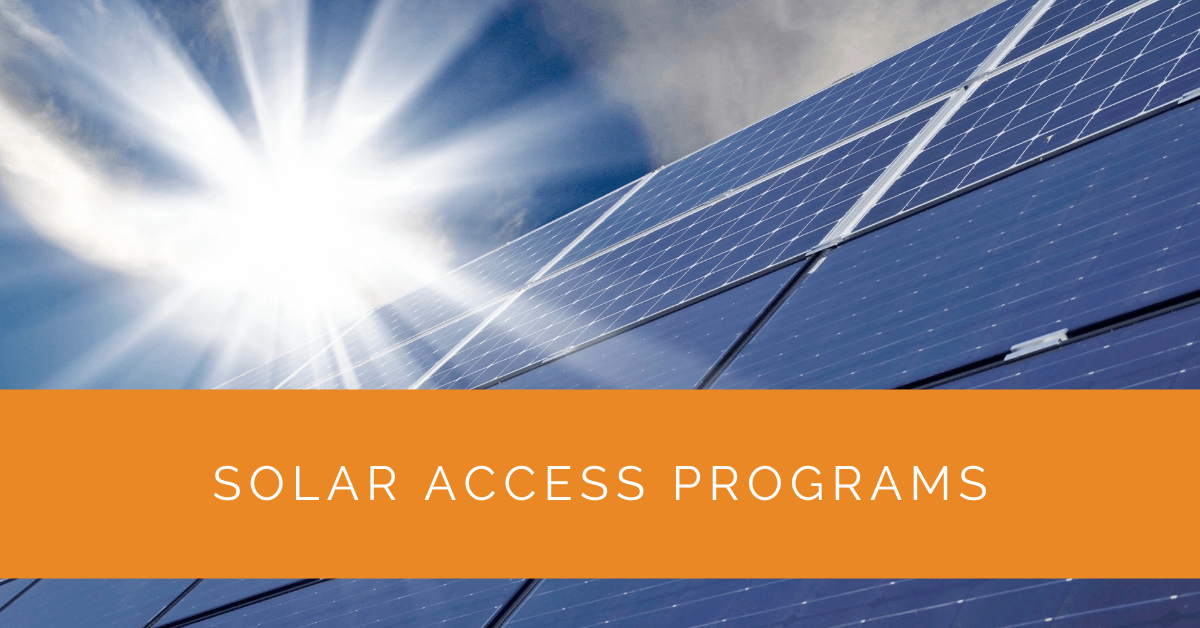Access to clean and sustainable energy sources, such as solar energy, is vital to a greener and more equitable future. Solar access programs play a pivotal role in democratizing clean energy, ensuring that communities, regardless of income or location, can harness the sun’s power. This article will delve into the significance of solar access programs, their advantages, best practices, and how they expand access to solar resources.
Contents
- 1 Key Takeaways
- 2 What Are Solar Access Programs?
- 3 Advantages of Solar Access Programs
- 4 Expanding Access to Solar Resources
- 5 Solar Access Savings Calculator
- 6 Best Practices for Implementing Solar Access Programs
- 7 Overcoming Barriers to Solar Access
- 8 Measuring the Impact of Solar Access Programs
- 9 Case Study: Implementing Solar Access Programs
- 10 Expert Insights From Our Solar Panel Installers About Solar Access Programs
- 11 Experience Solar Excellence with Us!
- 12 Conclusion
Key Takeaways
- Solar access programs play a crucial role in expanding access to clean and sustainable energy, offering environmental and economic benefits to communities.
- Community solar initiatives are a cornerstone of these programs, allowing individuals and households to invest in solar systems and reduce electricity bills collectively.
- Overcoming barriers to solar access, increasing awareness, and measuring the impact are essential steps in ensuring clean energy’s success and equitable distribution through these programs.
What Are Solar Access Programs?
Defining Solar Access Programs
Solar access programs are initiatives designed to break down barriers and make solar energy accessible to a wider range of individuals and communities. These programs aim to overcome challenges related to the high upfront costs of solar systems and the logistical complexities of installation. Doing so enables households, especially low-income ones, to participate in the clean energy transition.
Promoting Equitable Access to Clean Energy
One of the central goals of solar access programs is to promote equitable access to clean energy. In many regions, low-income communities have limited access to solar energy due to financial constraints or lack of suitable rooftops for solar installations. Solar access programs aim to rectify this imbalance by offering innovative solutions that expand access to solar energy.
Advantages of Solar Access Programs
Environmental and Economic Benefits
Solar access programs offer a myriad of benefits, both environmental and economic. From an environmental standpoint, they contribute to reducing greenhouse gas emissions, air pollution, and dependence on fossil fuels. Solar access programs play a crucial role in combating climate change and preserving our planet by increasing the adoption of clean energy.
On the economic front, these programs provide financial relief to participating households. Solar energy systems can significantly reduce electricity bills, helping families allocate resources to other essential needs. This financial relief can be especially impactful for low-income households that spend a substantial portion of their income on energy bills.
Reducing Household Electricity Bills
One of solar access programs’ most immediate and tangible benefits is reducing household electricity bills. Solar energy systems generate electricity from sunlight, whether installed on rooftops or in community solar projects. This self-generated electricity offsets the need to purchase electricity from the grid, resulting in lower monthly utility bills for participating households.

Expanding Access to Solar Resources
Community Solar Initiatives
Community solar, or shared solar, is a cornerstone of many solar access programs. These initiatives allow individuals or households to collectively invest in a shared solar system, often located in a central location, such as a community solar garden or on the premises of a local utility. Participants receive credits on their electricity bills for the energy their share of the solar system generates.
Community solar projects are particularly beneficial for individuals who cannot install solar panels on their rooftops due to shading, structural limitations, or rental agreements. These projects provide a practical solution to expand access to solar resources and enable more people to benefit from clean energy.
Targeting Low-Income and Underserved Communities
Solar access programs recognize that low-income and underserved communities often face the greatest energy challenges. These programs prioritize these communities, ensuring they are not left behind in the transition to clean energy. By offering financial incentives, subsidies, or affordable financing options, solar access programs make it financially viable for low-income households to participate.
Solar Access Savings Calculator
Find out how much you could save with a solar access or community solar program.
Best Practices for Implementing Solar Access Programs
Key Strategies for Success
Implementing effective solar access programs requires careful planning and execution. Some key strategies include:
- Financial Incentives: Offering financial incentives, such as rebates or tax credits, to reduce the upfront costs of solar installations.
- Public-Private Partnerships: Collaborating with local governments, utilities, and private organizations to leverage resources and expertise.
- Community Engagement: Engaging with the community to understand their specific needs and preferences and involving them in decision-making processes.
Successful Case Studies
Several successful solar access programs and community solar projects have set a precedent for expansion:
- The New York State Community Solar Program enables residents to subscribe to community solar projects, reducing their energy bills and supporting renewable energy generation.
- The California Low-Income Weatherization Program: This initiative combines energy efficiency upgrades with solar installations to reduce energy costs for low-income households.

Overcoming Barriers to Solar Access
Addressing Utility Challenges
Utilities play a critical role in the success of solar access programs. However, some utilities may face challenges in accommodating distributed solar generation. These challenges require regulatory changes, grid enhancements, and collaboration between utilities and program administrators.
Increasing Awareness and Participation
Awareness and participation are essential components of solar access programs. Outreach efforts, education, and marketing campaigns can help inform communities about the benefits and opportunities provided by these programs. Engaging local organizations, community leaders, and trusted voices can foster greater participation.
Measuring the Impact of Solar Access Programs
Assessing Benefits for Energy Customers
Evaluating the impact of solar access programs involves assessing the benefits received by participating energy customers. This includes analyzing changes in electricity bills, energy savings, and the environmental benefits of reduced carbon emissions.
Evaluating Environmental Impacts
Measuring the environmental impact of solar access programs involves quantifying the reduction in greenhouse gas emissions resulting from increased solar energy adoption. These assessments provide valuable data on the program’s contribution to mitigating climate change.
Case Study: Implementing Solar Access Programs
Background
Our mission at Solar Panels Network USA is to democratize access to clean and sustainable energy through innovative solar access programs. By prioritizing low-income and underserved communities, we aim to bridge the gap in solar energy adoption, contributing to a more equitable and greener future.
Project Overview
One of our landmark projects involved the implementation of a comprehensive solar access program in a diverse urban community. This initiative focused on overcoming financial and logistical barriers to solar energy adoption, ensuring that even the most disadvantaged households could benefit from clean energy.
Implementation
- Financial Incentives: We collaborated with local government agencies and private organizations to offer substantial rebates and tax credits. These financial incentives significantly reduced the upfront costs of solar installations, making them accessible to low-income families.
- Community Engagement: Our team conducted extensive outreach efforts, engaging with local organizations, community leaders, and residents. We held informational sessions to educate the community about the benefits of solar energy and the specifics of our solar access program. By involving the community in the decision-making process, we ensured the program met their unique needs and preferences.
- Community Solar Initiatives: For households unable to install solar panels on their rooftops, we developed community solar projects. These shared solar systems were installed in central locations, allowing participants to receive credits on their electricity bills for the energy generated by their share of the solar system.
Results
- Economic Benefits: Participants saw a significant decrease in their monthly electricity bills. Families could redirect savings to other essential needs, providing financial relief, especially beneficial for low-income households.
- Environmental Impact: Noticeable reduction in greenhouse gas emissions due to increased adoption of solar energy. Decreased reliance on non-renewable energy sources, promoting a cleaner environment and contributing to broader efforts to combat climate change.
- Community Impact: High level of community involvement and satisfaction with the program. Participants felt more connected to environmental goals and the broader sustainability movement, fostering a sense of collective responsibility for sustainability within the community.
Summary
Our solar access program exemplifies the potential of collaborative, community-focused initiatives in expanding access to clean energy. By leveraging financial incentives, fostering community engagement, and developing innovative solutions like community solar projects, Solar Panels Network USA successfully overcame barriers to solar energy adoption. This case study underscores the importance of holistic, inclusive approaches in ensuring that all communities can participate in and benefit from the transition to sustainable energy.
Expert Insights From Our Solar Panel Installers About Solar Access Programs
Solar access programs are a game-changer for low-income communities. By making solar energy affordable and accessible, these programs help families save on energy costs while contributing to a greener planet.
Senior Solar Installer
Community solar initiatives are particularly effective. They allow renters and those without suitable rooftops to benefit from solar power, ensuring that everyone can participate in the clean energy revolution.
Lead Solar Engineer
Engaging the community and offering financial incentives are key to the success of solar access programs. When people see the tangible benefits, they’re more likely to support and participate in these initiatives.
Solar Energy Consultant
Experience Solar Excellence with Us!
Trust in Solar Panels Network USA, where our seasoned experts deliver top-quality solar solutions for homes and businesses nationwide. With a legacy of countless successful installations and a commitment to sustainable energy, we’re your reliable partner in the solar journey. Ready for a brighter, eco-friendly future? Call us now at (855) 427-0058 and harness the power of the sun!
Conclusion
Solar access programs are a hopeful way to transition towards a more sustainable and equitable energy future. By expanding access to solar resources, these initiatives empower communities, reduce electricity bills, and contribute to a cleaner environment. As awareness grows and best practices continue to evolve, solar access programs have the potential to make clean energy a reality for all, regardless of income or location. Embracing solar access programs is not just about harnessing the power of the sun; it’s about harnessing the power of inclusivity and environmental stewardship for generations to come.
About the Author
Solar Panels Network USA stands at the forefront of solar energy solutions, driven by a team of seasoned solar engineers and energy consultants. With over decades of experience in delivering high-quality solar installations and maintenance, we are committed to promoting sustainable energy through customer-centric, tailored solutions. Our articles reflect this commitment, crafted collaboratively by experts to provide accurate, up-to-date insights into solar technology, ensuring our readers are well-informed and empowered in their solar energy decisions.

